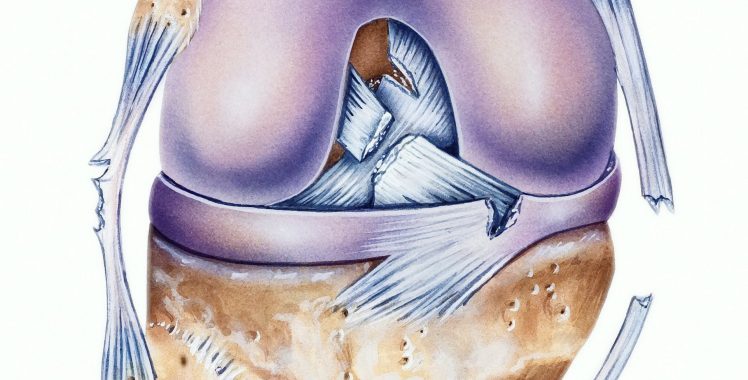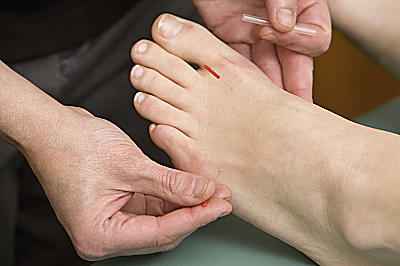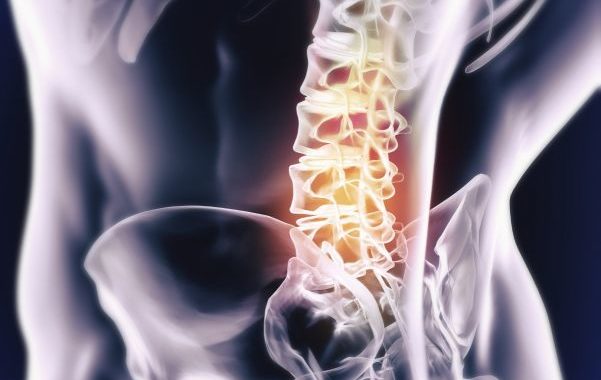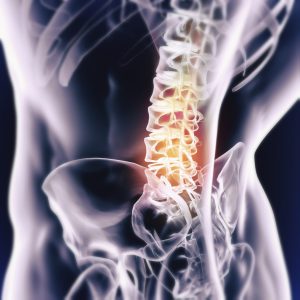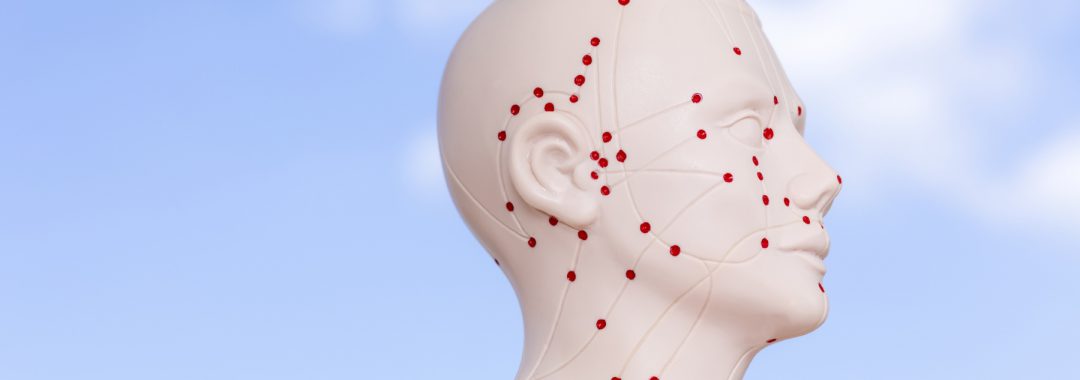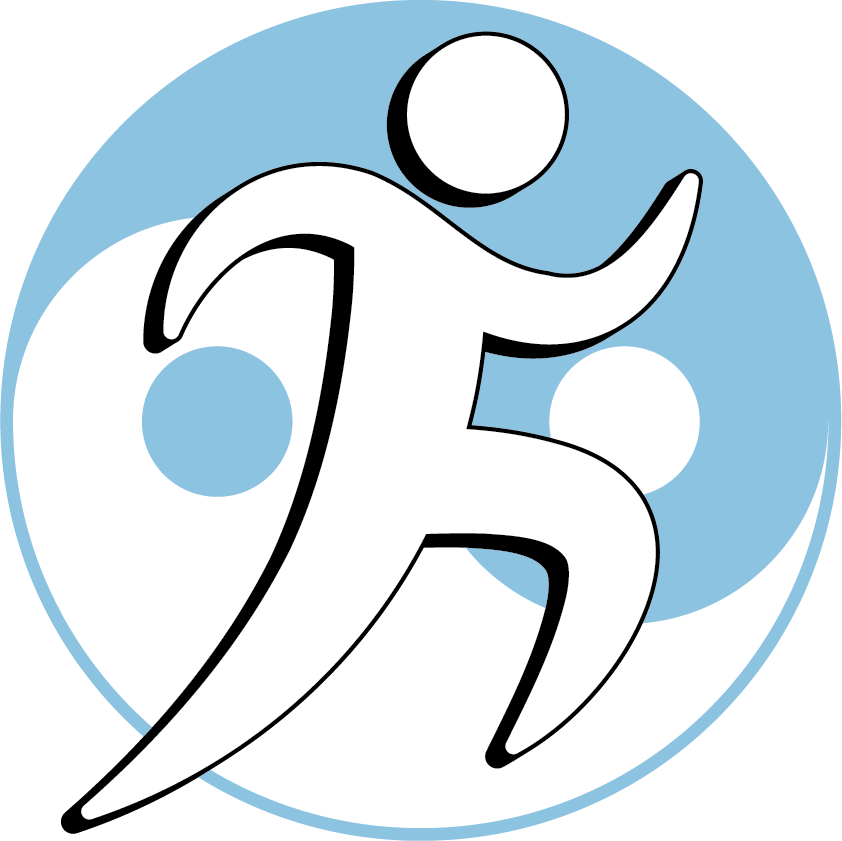Open to access this content
Category Archives: AOM Class Offerings
Calf, Ankle & Foot
In-Person Classes & Live Webinars
Must be attended at the time/date offered for Live PDAs/CEUs
See below for detailed description of class contents
Basics of Calf, Ankle, Foot
with Anthony Von der Muhll
Contact Us for next class date
has been added to your cart!
First time user? Your account will be automatically be created after purchase. Please note:
--Webinars require continuous attendance on the date(s) offered to receive PDAs/CEUs. If you cannot attend, please consider a self-paced distance-learning version instead, if available, or another class that you will be able to attend.
--Ebooks are included with class purchase--please do not purchase both. When purchased separately, Ebooks are for informational purposes only--no PDAs/CEUs.
Questions? Please visit our FAQ page. Thank you for your purchase!
Anatomy Lab for Acupuncturists
with Jamie Bender
Fri July 10, 2026, 9:00-6:00, at ACCHS, Oakland CA
has been added to your cart!
First time user? Your account will be automatically be created after purchase. Please note:
--Webinars require continuous attendance on the date(s) offered to receive PDAs/CEUs. If you cannot attend, please consider a self-paced distance-learning version instead, if available, or another class that you will be able to attend.
--Ebooks are included with class purchase--please do not purchase both. When purchased separately, Ebooks are for informational purposes only--no PDAs/CEUs.
Questions? Please visit our FAQ page. Thank you for your purchase!
History-Taking, Exam, Assessment, Treatment
with Anthony Von der Muhll
Sat-Sun July 11-12, 2026, 9:00-6:00, at ACCHS, Oakland CA
has been added to your cart!
First time user? Your account will be automatically be created after purchase. Please note:
--Webinars require continuous attendance on the date(s) offered to receive PDAs/CEUs. If you cannot attend, please consider a self-paced distance-learning version instead, if available, or another class that you will be able to attend.
--Ebooks are included with class purchase--please do not purchase both. When purchased separately, Ebooks are for informational purposes only--no PDAs/CEUs.
Questions? Please visit our FAQ page. Thank you for your purchase!
Review & Practicum Lab
with Anthony Von der Muhll
Monday July 13, 2026, 9:00-6:00, at ACCHS, Oakland CA
has been added to your cart!
First time user? Your account will be automatically be created after purchase. Please note:
--Webinars require continuous attendance on the date(s) offered to receive PDAs/CEUs. If you cannot attend, please consider a self-paced distance-learning version instead, if available, or another class that you will be able to attend.
--Ebooks are included with class purchase--please do not purchase both. When purchased separately, Ebooks are for informational purposes only--no PDAs/CEUs.
Questions? Please visit our FAQ page. Thank you for your purchase!
Self-Paced Distance Learning
1-year on-demand access
See below for detailed description of class contents
Calf, Ankle, Foot: History, Exam, Assessment, Treatment
Self-paced Distance-learning Module
with Anthony Von der Muhll
has been added to your cart!
First time user? Your account will be automatically be created after purchase. Please note:
--Webinars require continuous attendance on the date(s) offered to receive PDAs/CEUs. If you cannot attend, please consider a self-paced distance-learning version instead, if available, or another class that you will be able to attend.
--Ebooks are included with class purchase--please do not purchase both. When purchased separately, Ebooks are for informational purposes only--no PDAs/CEUs.
Questions? Please visit our FAQ page. Thank you for your purchase!
Comments from Class Evaluations
"This class will directly benefit my patients...Very thorough and patient teaching + re-teaching...No suggestions, he's awesome." --Whitney Bird, L.Ac., Napa CA
"Wonderful class! I use this information in the clinic quite often." -- Eunhye Kim, L.Ac., Oakland CA
Clinical anatomy, kinesiology, and the jing-jin ("sinew meridians" or myofascial tracts)
- Bones, joints, muscles, tendons, and neurology
- Posture and motion dysfunctions
- The arthritic progression: strain/sprain, derangement, degeneration
Physical exam of the calf, ankle and foot: how findings can guide treatment with acupuncture modalities
- Observation of gait dysfunctions
- Surface anatomy, inspection and palpation
- Ankle and foot joint active range-of-motion, tracking and functional tests: measurements, diagnostic significance
- Ankle and foot passive range-of-motion and joint-play/end-feel stress tests
- Muscle length and manual strength testing and referred pain pattern charts for 20 key muscles of the calf, ankle, and foot
- Special orthopedic tests for the ankle and foot
- Documentation of physical exam findings
- Measuring and reporting functional capacity baselines and treatment outcomes
- Clinical flow charts to facilitate efficiency and accuracy in examination
Diagnosis, Pattern Identification, and Treatment
Calf
- Gastroc/soleus strains and plantaris ruptures
- Achilles, tibialis anterior, peroneal, and toe extensor tendinitis and nodular tendinosus
- Tibialis posterior dysfunction
- Medial tibial stress (“shin splints”) syndrome
Ankle joint
- Ankle sprains
- Calcaneal bursitis
- Chronic ankle instability: ATF, PTF, and CF ligamentous laxity
- Post-surgical adhesive capsulitis
- Degenerative joint disease/osteoarthrosis
- Sinus tarsi and lateral ankle impingement syndromes
Foot
- Acute sprains/strains
- Plantar fasciitis and metatarsalgia
- Turf toe and sesamoiditis
Peripheral neuropathies
- Peroneal neuropathy
- Tarsal tunnel syndrome
- Morton’s neuritis and neuromas
- Reflex sympathetic dystrophy/complex regional pain syndrome
Treatment modalities include:
- Myofasicial Trigger Needling: tibialis anterior, toe extensors, fibularis group, gastroc/soleus
- Prolo-acupuncture: ankle and foot ligaments, mid-foot, metatarsal and toe joints
- Active Cupping: suction + ankle ROM for calf muscle stretching
- Gua sha and tui na to normalize ankle joint mechanics
- Electro-acupuncture for peripheral nerve entrapment
- 3-edged, lancet and 7-star needle therapies
- Exercise therapy for calf, ankle and foot injury recovery and prevention
- Splints, taping, and footwear prescription
- Stabilization splints and sleeves
- Motion control vs. barefoot theories
- Taping techniques for plantar fasciitis
- Calf, ankle and foot strengthening, stretching and stabilization
Build on your skills with the Review/Practicum Lab.
View full certification program and register for in-person, live webinar and self-paced distance-learning classes.
Hip, Thigh, Knee — Anatomy Lab for Acupuncturists
Enhance your clinical skills through palpation, inspection and movement
With Instructor Jamie Bender L.Ac., DAOM
has been added to your cart!
First time user? Your account will be automatically be created after purchase. Please note:
--Webinars require continuous attendance on the date(s) offered to receive PDAs/CEUs. If you cannot attend, please consider a self-paced distance-learning version instead, if available, or another class that you will be able to attend.
--Ebooks are included with class purchase--please do not purchase both. When purchased separately, Ebooks are for informational purposes only--no PDAs/CEUs.
Questions? Please visit our FAQ page. Thank you for your purchase!
Precise knowledge of clinical anatomy and kinesiology, and orthopedic/myofascial palpation and inspection, and movement analysis skills, are all essential foundations for diagnosis, and for determining where--and where not--to needle.
This unique class prepares students to get the most from the Hip, Thigh, Knee module & Review/Practicum Lab.
Clinical anatomy and the jing-jin ("sinew meridians" or myofascial tracts)
- We will improve our abilities to accurately locate key bony landmarks, muscles, tendons, joints, neural and vascular tissues, through palpation on ourselves and each other, and through review of clinical anatomy.
- Through palpation, observation and movement exercises, we will explore functions of key muscles and their jing-jin associations, as well as functional vs. dysfunctional movement patterns.
- We will review safety considerations, including needling angle and depth, to avoid injuring the many critical structures in this body region.
Enhanced orthopedic palpation and inspection skills
- We will enhance our abilities to feel different tissue types and layers: skin, fascia, muscle, nerve, blood vessel, and bone, with both our hands and needle-tip sensation.
- We will practice inspection and palpation for tissue abnormalities including myofascial trigger points, tendinopathies and joint disorders.
Review of anatomical structure and kinesiologic function
Bony landmarks. Know anatomy, and in those cases indicated below, also know how to locate by palpation. Know which muscles attach to bony landmarks, if applicable.
- Ilium
-
-
-
- Anterior superior iliac spine (locate by palpation)
- Tensor fascia lata attachment
- Sartorius attachment
- Anterior inferior iliac spine (know anatomy; difficult to palpate)
- Quadriceps attachment
- Anterior superior iliac spine (locate by palpation)
-
-
- Ischium
-
-
-
- Ischial tuberosity (locate by palpation)
- Hamstrings attachment
- Ischial tuberosity (locate by palpation)
-
-
- Femur
-
-
- Greater trochanter (locate by palpation)
- Gluteal attachments
- Maximus
- Medius
- Minimus
- External rotator attachments
- Piriformis
- Quadratus femoris
- Gluteal attachments
- Lesser trochanter (know anatomy; difficult to palpate)
- Iliopsoas tendon attachment
- Greater trochanter (locate by palpation)
- Knee joints
- Tibio-femoral joints
- Medial compartment, tibio-femoral joint line
- Medial femoral condyle
- Gastrocnemius medial head attachment
- Pes anserinus
- Attachment of sartorius, semitendinosus, gracilis
- Tibial plateau, medial (cannot be palpated; know anatomy only)
- Tibial spine (cannot be palpated; know anatomy only)
- Medial femoral condyle
- Lateral compartment, tibio-femoral joint line
- Lateral femoral condyle
- Gastrocnemius lateral head attachment
- Tibial plateau, lateral (cannot be palpated; know anatomy only)
- Tubercle of Gerdy
- Iliotibial band distal attachment
- Lateral femoral condyle
- Medial compartment, tibio-femoral joint line
- Patello-femoral joint
- Patella
- Base
- Apex
- Medial facet (cannot be palpated; know anatomy only)
- Lateral facet (cannot be palpated; know anatomy only)
- Tibial tuberosity
- Quadriceps muscles and tendon attachment
- Patella
- Superior tibio-fibular jointline (In strict anatomical terms, this joint is part of the calf, however, as it presents clinically as lateral knee pain, it is covered in this class)
- Fibular head
- Tibio-femoral joints
-
- Myofascial structures that move and stabilize the hip and knee joints. Be able to locate by palpation; know attachments and primary functions.
-
- Multi-joint muscles (focus on actions on hip and knee joints)
- Iliopsoas
- Hamstring group
- Biceps femoris
- Semimembranosus
- Semitendonusus
- Rectus femoris
- Sartorius
- Gracilis
- Gastrocnemius
- Hip adductors
- Magnus
- Longus
- Brevis
- Pectineus
- Hip flexors (single joint)
- Tensor fascia lata
- Hip extensors (single joint)
- Gluteal group
- Maximus
- Medius
- Minimus
- Gluteal group
- Knee extensors (single joint)
- Vastus
- Lateralis
- Medialis
- Intermedius
- Vastus
- Knee flexors and rotators (single joint)
- Popliteus
- Multi-joint muscles (focus on actions on hip and knee joints)
- Neurovascular tracts and critical structures. Be able to locate by anatomical landmarks.
-
- Femoral artery
- Popliteal artery
- Sciatic and tibial nerves: course through hamstrings and popliteal fossa
View full certification program and register for in-person, live webinar and self-paced distance-learning classes.
Hip, Thigh, Knee
In-Person Classes & Live Webinars
Must be attended at the time/date offered for Live PDAs/CEUs
See below for detailed description of class contents
Basics of Hip, Thigh, Knee
Live Webinar with Anthony Von der Muhll
Monday, September 8, 2025, 8:00-9:00 pm Eastern Time
has been added to your cart!
First time user? Your account will be automatically be created after purchase. Please note:
--Webinars require continuous attendance on the date(s) offered to receive PDAs/CEUs. If you cannot attend, please consider a self-paced distance-learning version instead, if available, or another class that you will be able to attend.
--Ebooks are included with class purchase--please do not purchase both. When purchased separately, Ebooks are for informational purposes only--no PDAs/CEUs.
Questions? Please visit our FAQ page. Thank you for your purchase!
Hip, Thigh, Knee: History, Examination, Assessment & Treatment
with Anthony Von der Muhll
Saturday-Sunday, October 4-5, 2025, 9:00-6:00
at the Virginia University of Integrative Medicine, 1980 Gallows Road, Vienna VA
has been added to your cart!
First time user? Your account will be automatically be created after purchase. Please note:
--Webinars require continuous attendance on the date(s) offered to receive PDAs/CEUs. If you cannot attend, please consider a self-paced distance-learning version instead, if available, or another class that you will be able to attend.
--Ebooks are included with class purchase--please do not purchase both. When purchased separately, Ebooks are for informational purposes only--no PDAs/CEUs.
Questions? Please visit our FAQ page. Thank you for your purchase!
Hip, Thigh, Knee: Review & Practicum Lab
with Anthony Von der Muhll
Monday, October 6, 2025, 8:30-5:30
at the Virginia University of Integrative Medicine, 1980 Gallows Road, Vienna VA
Prerequisite: prior completion of Hip, Thigh, Knee: History, Examination, Assessment and Treatment (either in-person or distance-learning)
has been added to your cart!
First time user? Your account will be automatically be created after purchase. Please note:
--Webinars require continuous attendance on the date(s) offered to receive PDAs/CEUs. If you cannot attend, please consider a self-paced distance-learning version instead, if available, or another class that you will be able to attend.
--Ebooks are included with class purchase--please do not purchase both. When purchased separately, Ebooks are for informational purposes only--no PDAs/CEUs.
Questions? Please visit our FAQ page. Thank you for your purchase!
Self-Paced Distance Learning
1-year on-demand access
See below for detailed description of class contents
Hip, Thigh & Knee: History, Exam, Assessment, Treatment
Self-paced Distance-learning Module
with Anthony Von der Muhll
has been added to your cart!
First time user? Your account will be automatically be created after purchase. Please note:
--Webinars require continuous attendance on the date(s) offered to receive PDAs/CEUs. If you cannot attend, please consider a self-paced distance-learning version instead, if available, or another class that you will be able to attend.
--Ebooks are included with class purchase--please do not purchase both. When purchased separately, Ebooks are for informational purposes only--no PDAs/CEUs.
Questions? Please visit our FAQ page. Thank you for your purchase!
Comments from Course Evaluations
"Anthony is a wealth of knowledge and a great service to the profession. So grateful for him!" -- Kevin Craft, LAc., Oceanside CA
"I use this information everyday in the clinic. So very useful and effective!" -- Eunhye Kim, LAc., Oakland CA
Clinical anatomy, kinesiology, and the jing-jin ("sinew meridians" or myofascial tracts)
- Bones, muscles, discs and facet joints, and neurology
- Posture and motion dysfunctions
- The arthritic progression: strain/sprain, derangement, degeneration
History-taking: key diagnostic questions
- "Red flag" symptoms of urgent/serious medical conditions potentially warranting referral to physician care: stenosis, tumors, infection, fractures, and neuropathies
- Identifying the affected jing-jin ("sinew meridians" or myofascial tracts).
- Differentiating symptoms of muscles, joint, disc, spinal cord, and nerve root injuries
- Neural hypersensitization and psycho-social factors
Physical exam of the low back, neck and shoulder: how findings can guide acupuncture treatment
- Classical jing-jin and modern orthopedic observation, inspection and palpation
- Joint exam: active range-of-motion and passive stress testing of the spinal and shoulder joints
- Examination for upper and lower motor neuron lesions: deep tendon, and pathologic reflexes and sensory, and motor function
- Manual strength testing and referred pain pattern charts for 35 key muscles of the low back, core and pelvic girdle, neck and shoulder
- Special orthopedic tests for the back, neck and shoulder
- Clinical flow charts to facilitate efficiency and accuracy in examination
Diagnosis and pattern identification
- Jing-jin syndromes
- Postural and motion dysfunctions
- Muscle strains and myofascial pain
- Radiculopathies and stenosis
- Chronic back, neck and shoulder pain, spondylosis, arthritis, degenerative disc disease, scoliosis
- Spinal spondylolistheses
- Failed spinal surgery syndromes
- For the low back: post-partum pain, insufficiency of the iliolumbar and sacrotuberous ligaments, and dysfunctions of the sacroiliac joint
- For the neck and shoulder: cervical facet, glenohumeral and acromioclavicular joint pain
Treatment of the jing-jin and orthopedic conditions
- Myofasicial trigger point needling.
- Low back: quadratus lumborum, iliopsoas, gluteals, hip external rotators, and abdominals.
- Neck: upper trapezius, levator scapula, scalenes, sternocliedomastoid.
- Joint & ligament acupuncture.
- Low back: iliolumbar, posterior sacro-iliac, and sacro-tuberous ligaments.
- Neck: spondylolistheses and facets. Shoulder: glenohumeral and acromioclavicular joints
- Active cupping. Suction + movement to improve spinal range-of-motion and joint biomechanics.
- Gua sha and tui na. Manual myofascial and joint mobilization.
- Electroacupuncture. For radiculopathies and spinal cord compression and injuries.
- 3-edged, lancet and 7-star needle therapies. Moving and draining blood stagnation to reduce pain and restore flexibility.
For facility information only, contact:
078 926 00 94*
info@aavabasel.ch
View full certification program and register for in-person, live webinar and self-paced distance-learning classes.
Hip, Thigh, Knee — Anatomy Lab for Acupuncturists
Open to access this content
Avoiding Lawsuits IV: Laws & Ethics in Marketing & Billing — Distance Learning Course
Open to access this content
Avoiding Lawsuits III: Standards of Care, Safety & Documentation — Distance Learning Course
Open to access this content
Avoiding Lawsuits II: Clarifying Gray Areas in Scope of Practice & Consent — Distance Learning Course
Open to access this content
Avoiding Lawsuits IV: Laws & Ethics in Billing & Marketing — Live Webinar
Open to access this content
Avoiding Lawsuits III: Standards of Care, Safety & Documentation — Live Webinar
Open to access this content
